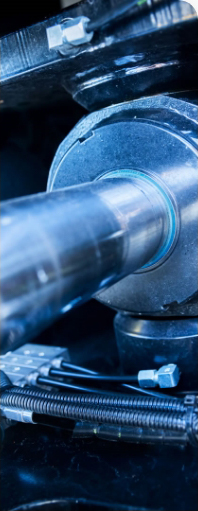Close

Want to know which innovations are available to your target group? Leave your name and email address and we will make sure you stay up-to-date.
Visiting address
Titaniumlaan 120
5221 CL 's Hertogenbosch
Telephone:
+31 73 599 60 00
Fax: +31 73 599 60 60
Email
[email protected]

Want to know which innovations are available to your target group? Leave your name and email address and we will make sure you stay up-to-date.
24 February 2022
What do you take into account when choosing the right valve?
Butterfly valves are frequently used in the processing industry, for example in the food industry and chemical industry. When selecting the right valve you take various important aspects into account. In this blog we focus on the sanitary butterfly valves. To avoid you not seeing the forest for the trees, we explain the most important specifications in 6 steps.

One of the first and most important specifications when choosing the right butterfly valve, is determing the diameter of the pipe and therefore the dimensions of the valve. In the food industry there are various metric systems, like DIN, INCH and ISO. In the Netherlands the most used metric system is DIN Reihe 2 according to EN 10357, previously DIN 11850.
The most common butterfly valve is equipped with welding ends. However, there are many other connection variants possible. To prevent contamination, the internal diameter must be equal to the pipe or installation to which this butterfly valve is attached. To replace the seal, at least half of the valve body must be removable. The piping must also have sufficient axial and radial mobility.
Maintenance is an important aspect when choosing the right butterfly valve. How often should the valve be cleaned? And how often should maintenance take place? When the valve is located in a difficult to access area, a butterfly valve in intermediate flange design is usually chosen. The advantage of this butterfly valve is that when the bolts are removed, the body can be taken out between the flanges, without having to take up much radial play.
Each butterfly valve brand has its own characteristics. It may be that a standard brand is already used in the current installation. External features and/or engravings can usually be used to identify the butterfly valve brand.

When choosing between stainless steel 304 (1.4301) or stainless steel 316L (1.4404), the required corrosion resistance of the material is mainly decisive. Companies active in the food industry often use stainless steel 304, and more importantly, this is also sufficient. Only in an aggressive environment stainless steel 316 is a more desirable alternative.
Butterfly valve gaskets, also called manchettes, are available in various qualities. The most common material qualities are EPDM, HNBR, VMQ (silicone) and FKM (Viton®). The seal quality has a big influence on the lifetime of the gasket and therefore on the functioning of the butterfly valve. To select the right gasket, it is important to consider several factors such as:

A gasket comes into contact with the medium flowing through the butterfly valve. But it also comes into contact with cleaning agent during CIP/SIP. Each quality reacts differently to the medium it comes into contact with. The medium has a major influence on the gasket's lifespan. For example, EPDM is not very resistant to vegetable oils and animal fats. Peanut butter and mayonnaise are therefore a bad combination with an EPDM seal. Viton, for example, is not resistant to steam, which is used during SIP. What is also important, is the contact time and concentration of the medium with the seal. To prevent leakage, it is important to use only original gaskets from the butterfly valve manufacturer
Not all gaskets perform well under higher pressures. This creates the risk of seals wearing out more quickly and not functioning reliably. To find out which material to use, you need to know the pressure that the gasket will be subjected to.
Temperature has a major influence on the service life of a gasket. Does the gasket come into contact with high or low temperatures? And does the temperature change often?
How often should the butterfly valve be opened and closed? Is that once a week or several times a day? This affects the service life of the gasket.
The simplest butterfly valves are operated manually and are opened by means of a standard manual control that can be opened and closed. If the switching frequency is low and the system is easily accessible, manual operation is often used. It is closed in 0° and open at 90°. There are also models with intermediate positions, such as a stepless manual control. The butterfly valve is used as a control valve and the butterfly can be positioned in various positions.
If the butterfly valve needs to be operated automatically, you can choose a pneumatic drive (air) or an electric drive. Possible options are:
With a control head it is possible to switch a pneumatically operated valve remotely by means of a micro processor or electrical control. A signal is sent to the valve. In the steering head there is a 3/2 solenoid valve that is electronically controlled so that the valve can be opened. In the steering head there are also proximity switches that transmit the position of the valve to the microprocessor. When the butterfly valve is open, the head turns green. If the valve is closed, the top turns red.
Both manually operated and pneumatically operated valves can be used to build up feedback. With manually operated valves, this is possible by means of a proximity switch, also called an inductive sensor on the lever. With an actuator, this is possible with the help of a feedback in the steering head or with a proximity switch.
Applying the right valve with the corresponding manchette prevents rapid wear and leakage. We are happy to help you find the right butterfly valve and the associated accessories!





Montakon | Titaniumlaan 120 | 5221 CL 's-Hertogenbosch | Nederland
+31(0)73 599 6000 | [email protected]